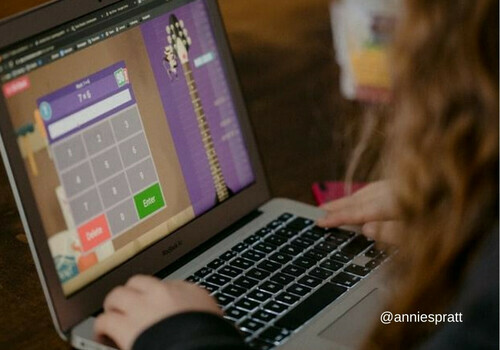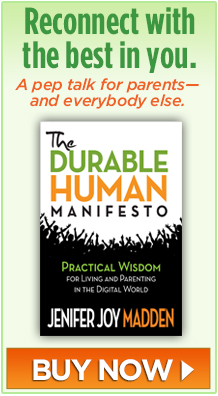
After a crushing disappointment, it became almost a miracle.
The broadcast journalism grad students from Syracuse University were supposed to spend the summer of 2020 in Washington, D.C. With media credentials dangling from their necks, they’d chase down interviews and comingle in our pop-up newsroom like network correspondents. Then, as for countless other students, their dreams were dashed. Because of the pandemic, the program would be all online.
But they rose to the challenge. Students pitched stories on Slack, did interviews on Zoom, and wrote scripts in Google Docs. We on the faculty fine-tuned the video and audio of their news reports with the powerful Frame.IO. We got the job done.
Although I’ve been wary of digital fixes in the past, I’m the first to admit: our program was saved by technology.
As the world heads into the first full school year of the pandemic, digital teaching tools will be crucial, especially since more than half of U.S. K through 12 schools expect not to return to a physical classroom. “We have to demand that the internet is a public utility and that it is installed for families that don’t have access,” says Merrie Najimy, President of the Massachusetts Teachers Association.
Yet, last spring’s quick switch to online learning has largely been deemed a failure—and kids are still feeling the pain. Pediatricians across the U.S. report an unprecedented number of patients with anxiety and depression borne by disrupted school and home routines.
So what’s a parent to do?
Luckily, we’ve learned from our mistakes. Based on the hard won experience served up on Zoom by boots-on-the-ground parents and education experts, here are 12 ways parents can help their kids do school better:
Get back to basics.
The first step is to know what only you can give your kids: consistent love and attention. You are their constant in a shaky world and the rock they lean on to endure the pandemic. Just like you keep a 24-hour eye on what they eat and how much they sleep, you need to monitor their well-being in the learning realm. Despite the disruptions, education should always be in service of keeping the whole child durable—in body, mind and spirit. Teachers should strive to build community and student collaboration while fostering critical thinking and creative expression. Digital teaching tools should be “tech intentional,” to borrow a term from the Campaign for a Commercial-Free Childhood — used to enhance, but never dampen, a child’s curiosity and love of learning.
Accept school-issued devices.
I was shocked to hear this tip from compatriot Lisa Cline—a fearless parent who founded and co-chairs the Montgomery County (Maryland) Council of PTAs Safe Technology Committee. Before the pandemic, Cline decried school-issued devices as overused and not doing enough to protect student privacy and security. But now she says her school system has greatly improved data protection and set strong boundaries around where students can range on the internet. “Accept a school computer if one is offered,” she advises. If a child uses her own device, chances are good “there will be distractions,” she adds. “Go get the district’s device. Restrictions are built in.”
Use one device at a time.
All of us get distracted by our phones. At the Digital Wellness Institute, I learned that simply having a phone in sight can cause focus issues at work. The mental effort it takes to resist checking your phone drains your concentration from the task at hand and renders you less productive. It’s the same way with kids, says education researcher Criscillia Benford. “Multi-tasking is a myth, especially for the developing brain.” She adds that “kids will be on Zoom but…phones will be out. There will be 3, 4, 5, or 20 other things they will be doing.” For that reason alone, collecting non-essential devices before the start of the school day is worth the effort and complaints. It will also help hone a 21st-century skill that all kids need: being able to concentrate on what matters.
Take frequent breaks.
Readers of How to Be a Durable Human know I’m big a proponent of the 20-20-20 rule. That is, to look away from the screen every 20 minutes at something at least 20 feet away for at least 20 seconds. The tech hygiene habit helps keep vision versatile and, speaking from my own experience, relieves headache and eyestrain. Cline says when her school board members first saw the 2020 fall proposed schedule, their reaction was: “This is a lot of screen time. You’ve got to fix this!” Students now will have built-in breaks for every 20 minutes they work at a screen. Another advantage of frequent breaks: kids who move regularly keep their metabolism in gear and may avoid gaining extra weight and developing other health problems caused by being sedentary, plus their brains get a creativity-recharging rest. Cline’s committee is also trying to limit the number of screen hours students spend for school. Her ideal: 15 minutes online per class to explain the lesson. Students would spend the remainder working offline and then submit hard copies or a photo of their completed work.
Hold school out in the open.
“Don’t let them go to their bedrooms,” advises Cline. “Let them set up a cool space in the dining room or at the kitchen table” where you can easily view their on-screen activities. As she points out, it’s not spying: “The teacher would be able to see their screens.” Doing schoolwork in a common space also serves to keep devices away from where kids sleep. Before the pandemic, children were woefully sleep-deprived. The American Academy of Pediatrics says young people have a much greater chance of getting proper sleep if electronic and digital devices are out of the bedroom. Another advantage I point out in the “Seek Sleep and Sanctuary” chapter of my book: a tech-free bedroom may be the only place where kids can take a deep breath, be alone with their thoughts, and mentally digest the day.
Use a Google alternative.
Did you know there are other search engines besides Google? In chapter 8 of my book, I (like Lisa Cline) recommend DuckDuckGo, a search engine which safeguards your privacy by bypassing the companies that feed off data collected in Google searches. It does the same for your child. DuckDuckGo also has a cleaner, much less busy user interface. Not only does the search engine not track you, its Bang feature cuts through landing pages and takes you directly where you want to go. If your child wants info on ants, for instance, by typing “!W Ants” in the DuckDuckGo search box, she’ll shoot right to the “Ants” page on Wikipedia.
Realize all tech is not created equal.
Even if parents may “be all-in for plug and play tech because they don’t feel like being teachers,” says Benford, they still need to be tech-aware. Algorithm-driven and data-collecting digital learning platforms can threaten to, in her words, “extinguish the love of learning.” Gamification, Benford adds, while being sold as being “fun” for students, can insidiously shift them from intrinsic to extrinsic motivation—subtly training them to perform only if they receive a reward. Preferable are open-ended programs that enhance critical thinking and protect privacy such as Seesaw, a digital portfolio tool that “creates a powerful learning loop between students, teachers, and families.” Seesaw doesn’t sell or rent student data. Student information is held privately within classrooms by default.
Ask to see school privacy policies.
So-called “personalized learning platforms” claim to “meet your child where they live,” but have spurred protests by students who feel they are anything but personal and force them into stultifying patterns of learning from computers instead of from teachers. Such programs operate by harvesting lots and lots of student data. Where that data ends up is not often clear. Because of that uncertainty, “we vet every single vendor,” says Najimy, who directed technology and curriculum education for Concord (Massachusetts) Public Schools. Every tech product’s privacy and security agreement is reviewed and “they weed out those products that they don’t like.” Najimy suggests asking questions about all school-based digital devices or programs, such as how student data is collected, stored, and shared with third parties.
Guard your child’s digital identity.
If digital products are collecting data on your child, he or she could become a “personal profit center” if the data is rented or sold, warns Faith Bonninger of National Education Policy Center. If your child is just starting school, you may be able to hold the line on data collection. You can ask that your child not be automatically given a Google email address, which is often the first step in creating a child’s digital dossier. Even if your child already has a unique student identifier, you can still do a lot to help protect your child’s privacy by asking that non-essential data be scrubbed at the end of the schoolyear, for instance.
Speak up when you need to.
Lisa Cline’s son was doing a science project when he searched the term “save the land.” But instead of learning about the environment, he was whisked to a site of the Ku Klux Klan, which also uses the term. Cline insisted that her school delete his search: “I told them, ‘I don’t want this to follow my kid around.’” Teachers can be your partners when seeking digital justice and clarity on behalf of your child. “Teachers have seen why limiting is good,” says Bonninger. “Parents and teachers can work together to demand the education kids need and use EdTech tools very intentionally, sparingly and carefully.” Applaud teachers who find ways to keep kids engaged and creative with hands-on, project-based lessons.
Use the Screens in Schools Action Kit.
Just getting your kids up in the morning can be a lot of work, so the idea of approaching schools on these tricky subjects can be daunting. Luckily, you have the Campaign for Commercial-Free Childhood’s Screens in Schools Action Kit. It’s free and chock full of resources such as petitions and questions you can use to begin discussions about your child’s digital learning life. The Action Kit invites you to “please use these tools as you talk with neighbors, school decision-makers, politicians, and anyone else you believe needs to be educated on this issue.”
Talk to your kids.
Just as when the coronavirus first emerged, your kids need to know you’re there for them, no matter what, and that you see and hear them. But don’t wait for them to tell you how they feel or if something’s bothering them—go ahead and ask. As for their digital lives, especially if they’ve used school-based tech for a while, they may appreciate being enlightened. “Kids’ eyeballs fall out when you tell them,” Cline says. “[They think] ‘What do you mean they know my location? What do you mean they are selling my data?’” In the case of “personalized learning,” Benford suggests explaining to kids that data- and algorithm-driven programs see them simply as a number and that such tech, as she says, “is not interested in you. It can’t care about you. It will try to seem like it does, but it can’t.”
In this post, we look at how to supplement at home what online learning can’t supply and extendscreen-based learning, such as by writing things down—whether on paper, a whiteboard, or in chalk on the sidewalk.
About the author: Jenifer Joy Madden is a Syracuse University broadcast and digital media adjunct professor, health journalist, and member of the Screens in Schools action group of the Campaign for a Commercial-Free Childhood.



